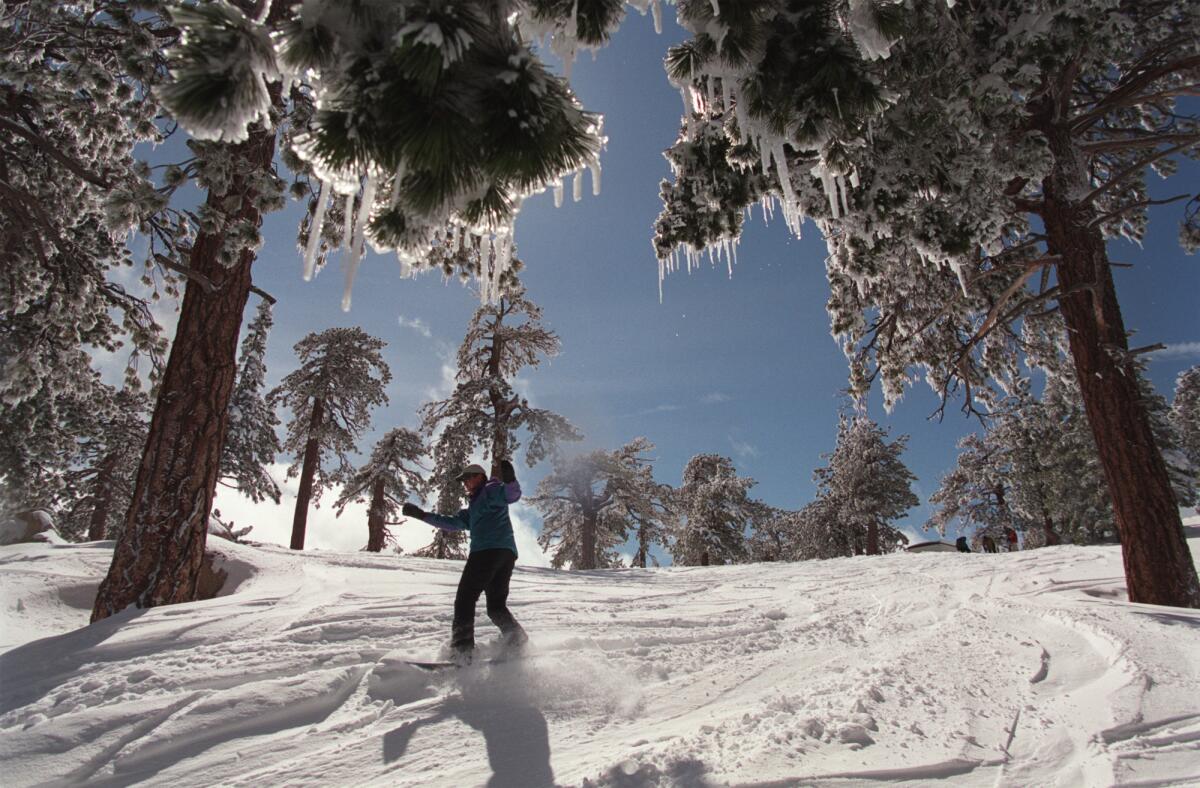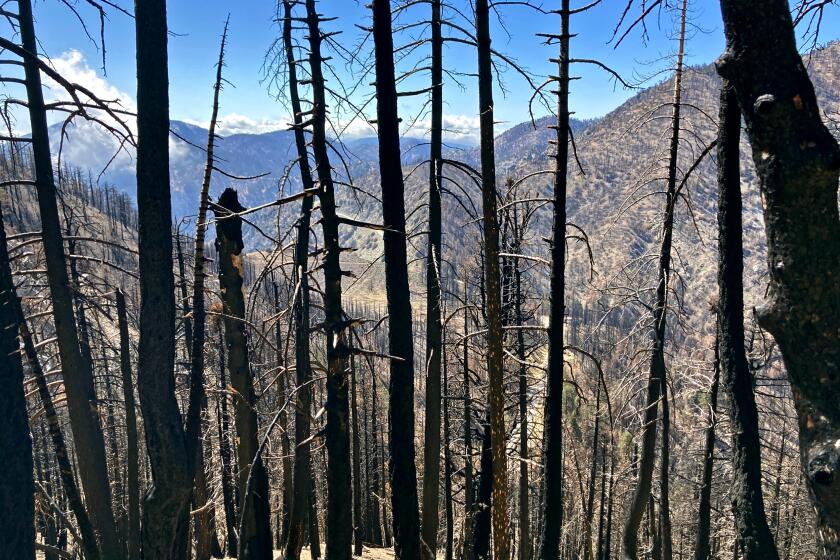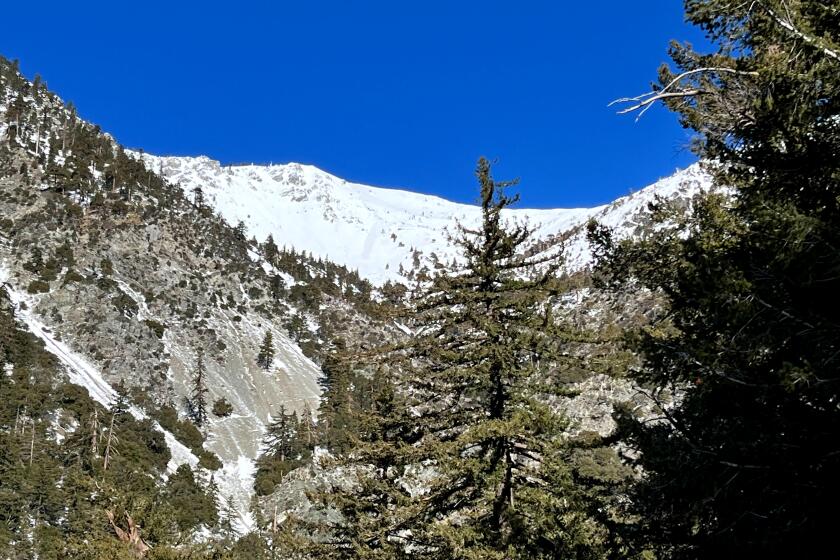Commentary: Spring is a real thing in L.A., if you go to the mountains

The phrase âspring in L.A.â has about the same level of meaninglessness as âit feels like a Tuesday.â Yes, we have jacaranda season and June gloom (or May gray) â both of which fall in the three months known as spring â but itâs hard to think much more of spring in this part of the world than âa little warmer than winterâ and âslightly cooler than the summer.â
Thatâs the price of living in year-round Mediterranean pleasantness: We forgo the seasonal rejuvenation that inspires poets and songwriters.
A readerâs tale of climate change wiping away a tree beloved by his late domestic partner, plus more from the week in Opinion.
All that is true if your idea of L.A. encompasses only the paved landscapes of the city and its suburbs. Venture just beyond the reach of our northern urban frontier and into the San Gabriel Mountains, and youâll see a real spring unfolding â snow melting, rivers and streams flowing, wildlife emerging â in sublime glory.
This isnât news to hikers or anyone else who spends time wandering in the local mountains. We salivate over the springs and summers nurtured by a winter of decent rain and snow (as this one was); alternatively, we dread the possibility of wildfires in dry years. Each visit to the mountains brings a fleeting reassurance that things are OK, a feeling that can be restored only by another ascent.
There have been 15 rescues and two deaths near 10,064-foot-high Mt. Baldy in 2023. Hikers need to think of rescue workers and stay away.
Yet so many of us in Southern California experience the San Gabriels (and the San Bernardinos, for that matter) only as onlookers from the urban flatlands. From here, the mountainsâ south-facing slopes might appear dry and even dull, uninviting to people who spend a lifetime in L.A. without ever seeing the greener, snowier northern slopes.
I know this, because almost every time I drive with someone on the majestic Angeles Crest Highway or all the way up Mt. Baldy Road â from sea-level aridity to swimming holes, waterfalls and snow higher up â I hear mutterings of âI had no idea.â
Part of the shock comes from experiencing just how close the nationâs second-largest metro area sits to such unspoiled, natural beauty. I spend much of my free time in the San Gabriels, and I still feel a sense of whiplash as the L.A. Basin comes dramatically into view above La CaĂąada Flintridge when driving down Angeles Crest.
For some, each trip to the fire-scarred San Gabriel and San Bernardino mountains feels like a goodbye to forests under assault by climate change.
The contrast was especially sharp this week, when temperatures in the 80s at home prompted me to get up into the mountains to soak up the spring snowmelt. I wasnât disappointed.
Due north of Glendora, where Angeles Crest Highway typically closes between the fall and late spring, I encountered an elusive bighorn sheep â for many local hikers a once-in-a-lifetime event, if that. At the base of Mt. Waterman, the closest ski area to Los Angeles, I marveled at how this section of the San Gabriels manages to hold on to a decent snowpack so far into April (a few recent storms helped too).
In fact, the snow conditions this winter were ideal enough for Mt. Waterman, which has no snow-making equipment, to run its lifts several weekends in March and April â the first time it had opened since early 2020. That fact alone marks 2024 as a special year for the San Gabriels.
Still, signs of the precarious state of the mountains and forests abound. Slopes scorched in the Bobcat fire sit within clear sight of Mt. Waterman, which itself nearly burned in the 2020 cataclysm. The contrast between forested mountainsides still covered in a healthy amount of snow and the burned, denuded ones drying much more quickly paints a grim picture of the San Gabrielsâ future under climate change.
For years now, with several of âmyâ spots having been blasted by fire, every trip into the local mountains has felt like one last pilgrimage. The ephemeral majesty of this spring may feel like a reprieve, but I wonât assume how long it might last.
At least itâs good motivation to get back into the San Gabriels as often as possible â because right now, spring in L.A. (or, in the right part of it) is one hell of a show.
More to Read
A cure for the common opinion
Get thought-provoking perspectives with our weekly newsletter.
You may occasionally receive promotional content from the Los Angeles Times.













